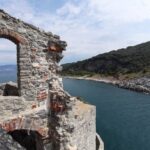Is it safe to travel to Italy after earthquake? The recent seismic activity in Italy has raised concerns among travelers regarding the safety of visiting the country. Understanding the impact of the earthquake on Italy is crucial in making an informed decision about traveling to the affected areas. This article aims to provide valuable insights into the current situation, safety measures, infrastructure assessment, popular tourist destinations, local support, travel insurance, and expert recommendations for visiting Italy after the earthquake.
Italy has been prone to seismic activity for centuries, and the recent earthquake has once again brought attention to the vulnerability of certain regions. The impact of the earthquake on Italy goes beyond physical damage, affecting tourism and travel plans for many individuals. It is important to evaluate the situation and consider various factors before making arrangements to visit Italy.
In this article, we will delve into the aftermath of the earthquake and its effect on tourism in Italy. Additionally, we will explore safety measures, infrastructure conditions, popular tourist destinations, local support available for tourists, importance of travel insurance, and expert recommendations for traveling responsibly to Italy post-earthquake. By gaining a comprehensive understanding of these aspects, travelers can make informed decisions about their visit to Italy during this challenging time.
Current Situation
The recent earthquake in Italy has had a significant impact on the country, including its tourism industry. The earthquake, which struck in a central region of Italy, caused widespread damage to infrastructure and affected popular tourist destinations. As a result, travelers may have concerns about the safety of visiting Italy after the earthquake.
Following the earthquake, there have been reports of disruptions to transportation and accommodations in some areas. Many hotels and attractions have been temporarily closed for repairs, while some roads and public facilities may still be undergoing restoration. It is important for travelers to stay informed about the current situation and be prepared for potential changes to their travel plans.
In addition to physical damage, the earthquake has also led to heightened concerns about safety and stability in affected regions. Travelers may be worried about potential aftershocks or other related risks. Therefore, it is essential for those considering a trip to Italy to understand the safety measures and protocols that are in place to protect tourists amidst the ongoing recovery efforts.
Safety Measures
After the recent earthquake in Italy, many travelers have been wondering if it is safe to visit the country. While natural disasters can be concerning, it is important to understand the safety measures and precautions that are in place for traveling to Italy post-earthquake. The Italian government and local authorities have been working diligently to ensure the safety of tourists, and there are specific protocols that have been implemented to address any potential risks.
Here are some safety measures and precautions for traveling to Italy after the earthquake:
- Stay Informed: Before traveling to Italy, it is essential to stay informed about the latest updates on the earthquake situation and any travel advisories issued by relevant authorities.
- Emergency Contacts: Have a list of emergency contacts, including local authorities, embassies or consulates, and your accommodation provider, readily available in case of any emergencies.
- Follow Safety Guidelines: Adhere to all safety guidelines provided by local officials and follow any evacuation or safety procedures if necessary.
In addition to these general safety measures, it is also crucial to take note of specific safety protocols that may be in place at tourist attractions or hotels in affected areas. Pay attention to any safety instructions provided by staff or signage, and be prepared for potential disruptions or changes to normal tourism activities.
Ultimately, while there may be some concerns about traveling to Italy after the earthquake, following these safety measures and staying informed can help ensure a safe and enjoyable trip. It is important to be cautious but also optimistic about visiting this beautiful country during its recovery process.
Infrastructure Assessment
The recent earthquake in Italy has undeniably taken a toll on the country’s infrastructure, especially in the affected areas. It is crucial to assess the condition of tourist infrastructure to determine if it is safe to travel to these locations. The earthquake may have caused damage to roads, bridges, and other essential facilities that are vital for tourism.
As of now, authorities and organizations are conducting thorough assessments of the infrastructure in affected areas. This includes evaluating the structural integrity of hotels, restaurants, historical sites, and transportation systems. It is important for travelers to stay updated on these assessments and consider them when planning their trips to Italy after the earthquake.
According to reports, restoration efforts are underway to repair and rebuild damaged infrastructure in several tourist destinations in Italy. However, it is essential for travelers to verify the safety and accessibility of specific locations before embarking on their journey. Being well-informed about the condition of tourist infrastructure can help mitigate any potential risks or inconveniences that may arise during travel.
| Italy Earthquake | Infrastructure Status |
|---|---|
| Rome | Minimal damage reported |
| Venice | No significant impact on tourist infrastructure |
| Florence | Some damage reported; restoration efforts ongoing |
Popular Tourist Destinations
Italy is known for its iconic tourist destinations such as the Colosseum in Rome, the Leaning Tower of Pisa, and the canals of Venice. These landmarks are not only significant cultural and historical sites but also major attractions for tourists visiting Italy. In the aftermath of the earthquake, there have been concerns about the safety and accessibility of these popular tourist spots.
Here is an overview of the current status of some of Italy’s most famous tourist destinations:
- The Colosseum: Despite the earthquake, the Colosseum remains open to visitors. However, there may be certain restricted areas or temporary closures for ongoing repair work. It is advisable to check with local authorities or tour operators for any updates before planning a visit.
- Leaning Tower of Pisa: The Leaning Tower of Pisa did not sustain any significant damage during the earthquake and continues to be a popular site for tourists. Visitors are advised to follow safety guidelines and instructions provided by officials at the site.
- Venice Canals: The city of Venice experienced minimal impact from the earthquake, and its picturesque canals and historic landmarks are open to visitors. It is recommended to be mindful of any potential disruptions to transportation services within the city.
It is important for travelers to stay informed about the latest developments regarding these attractions before planning their visit to Italy after the earthquake. Local tourism boards and official websites are reliable sources for updated information on accessibility and safety measures at popular tourist destinations. Additionally, tourists should adhere to any guidelines or instructions provided by local authorities while visiting these sites.
Local Support
Italy has been a popular tourist destination for many years, but the recent earthquake has raised concerns about the safety of traveling to the country. However, despite the challenges posed by the earthquake, Italy is taking steps to ensure that tourists are well-supported and welcomed in the country.
Government Assistance
The Italian government and local authorities have been working diligently to offer assistance and support to tourists affected by the earthquake. Information centers have been set up in major tourist areas to provide visitors with updates on safety conditions, transportation options, and emergency contact numbers. The government is also implementing measures to ensure that tourist areas are safe and accessible for travelers.
Support Services
In addition to government support, various organizations and volunteer groups are offering assistance to tourists in Italy. These groups provide essential services such as temporary shelter, food aid, medical assistance, and information on alternative travel routes. Tourists can seek help from these support services in case of any emergencies or challenges during their visit.
Cultural Institutions
Italy’s rich cultural heritage is an important part of its appeal as a tourist destination. Despite the earthquake, cultural institutions such as museums, galleries, and historical sites are committed to providing visitors with a safe and enjoyable experience. Many of these institutions have undergone safety inspections and are implementing measures to ensure that they can continue receiving visitors in a secure environment.
Overall, while concerns about safety after the earthquake are valid, Italy is actively working towards ensuring that tourists are supported and encouraged to visit the country. With government assistance, support services, and secure cultural institutions in place, travelers can feel reassured about visiting Italy post-earthquake.
Travel Insurance
Italy has been a popular tourist destination for travelers around the world, known for its rich history, beautiful landscapes, and cultural heritage. However, the recent earthquake has raised concerns about the safety of traveling to Italy. With the uncertainty surrounding natural disasters, it is crucial for tourists to understand the importance of having travel insurance when visiting Italy after the earthquake.
Importance of Travel Insurance
Travel insurance is essential for anyone planning a trip to Italy post-earthquake. It provides coverage for various unexpected situations such as trip cancellations, medical emergencies, and even natural disasters. With the ongoing impact of the earthquake on Italy’s infrastructure and tourist attractions, having travel insurance can offer peace of mind and financial protection in case of any unforeseen events during your trip.
Coverage of Travel Insurance
When considering travel insurance for a trip to Italy after the earthquake, it is important to review the coverage options provided by different insurance companies. Some policies may include coverage for trip cancellation or interruption due to natural disasters, while others may offer emergency medical coverage if needed. It is advisable to carefully read and understand the policy details to ensure that it covers specific concerns related to traveling in a post-earthquake scenario.
It is safe to travel to Italy after an earthquake with appropriate precautions and preparedness, including securing adequate travel insurance coverage. As tourists continue to plan their trips to this beautiful country, having travel insurance can provide a sense of security and assurance during uncertain times.
Travel Recommendations
Traveling to Italy after an earthquake can be a daunting prospect, but with the right precautions and advice, it is possible to do so safely. Here are some expert recommendations and tips for safe and responsible travel to Italy post-earthquake.
First and foremost, it is essential to stay informed about the current situation in Italy. Make sure to check for any travel advisories or updates from reliable sources such as government websites and international organizations. These resources will provide valuable information on the areas affected by the earthquake and any ongoing safety concerns.
Additionally, when planning your trip to Italy, consider visiting areas that were not heavily impacted by the earthquake. Regions such as Tuscany, Umbria, and Sicily remain popular tourist destinations and have not experienced significant damage from recent seismic activity. By choosing these locations, you can still enjoy the beauty of Italy while minimizing your exposure to potential risks.
Furthermore, it is advisable to have a comprehensive travel insurance policy that includes coverage for natural disasters such as earthquakes. This can provide peace of mind knowing that you are financially protected in case of any unforeseen events during your trip. Additionally, consider contacting local tour operators or authorities in Italy for up-to-date information on safety measures and recommendations specific to the areas you plan to visit.
| Expert Recommendations | Travel Tips |
|---|---|
| Stay informed about current situation in Italy. | Consider visiting areas not heavily impacted by the earthquake. |
| Have comprehensive travel insurance including coverage for natural disasters. | Contact local authorities for up-to-date safety information. |
Conclusion
In conclusion, despite the recent earthquake in Italy, it can still be safe to travel to the country as long as proper precautions are taken. The impact of the earthquake on Italy has been significant, particularly in terms of its effect on tourism. However, with the implementation of safety measures and infrastructure assessment, there is optimism for travelers looking to visit the country.
It is important for travelers to be aware of the safety protocols and precautions when traveling to Italy post-earthquake. Local support and efforts are also available for tourists in Italy, providing reassurance for those considering a trip to the affected areas. Additionally, having travel insurance is crucial to ensure coverage in case of any unforeseen circumstances during their visit.
While some tourist spots and attractions have been affected by the earthquake, many popular destinations in Italy remain open and accessible to visitors. It is essential for travelers to stay informed about the condition of these locations and follow expert advice and recommendations for safe and responsible travel. Ultimately, with careful planning and awareness of these factors, it is indeed possible to have a safe and enjoyable trip to Italy after the earthquake.
Frequently Asked Questions
Is It Safe to Travel to Naples After Earthquake?
Traveling to Naples after an earthquake requires some careful consideration. While most tourist areas in Naples are generally safe, it’s important to stay updated on any travel advisories or warnings from local authorities. It’s also wise to avoid areas that may have been more severely affected by the earthquake.
Where in Italy Is Safe From Earthquakes?
Italy is located in a seismically active region, but there are areas that are considered safer from earthquakes. Regions in northern Italy, such as Tuscany and Umbria, are generally less prone to seismic activity compared to central and southern Italy.
However, it’s always advisable to stay informed about the latest seismic activity and any travel advisories from local authorities no matter where you visit in Italy.
Is It Safe to Go to Naples Right Now?
The safety of traveling to Naples right now depends on various factors such as the specific location within the city, recent seismic activity, and any official travel advisories. Generally speaking, many parts of Naples are safe for tourists, but it’s essential to stay informed about any potential risks and take necessary precautions while visiting the city at this time.

I’m a passionate traveler, writer, and Italophile. My fascination with Italy’s history, art, and culture has led me on countless adventures across the Italian landscape. Through “I Live Italy,” I share my love for this extraordinary country and aims to inspire others to explore its boundless beauty.





